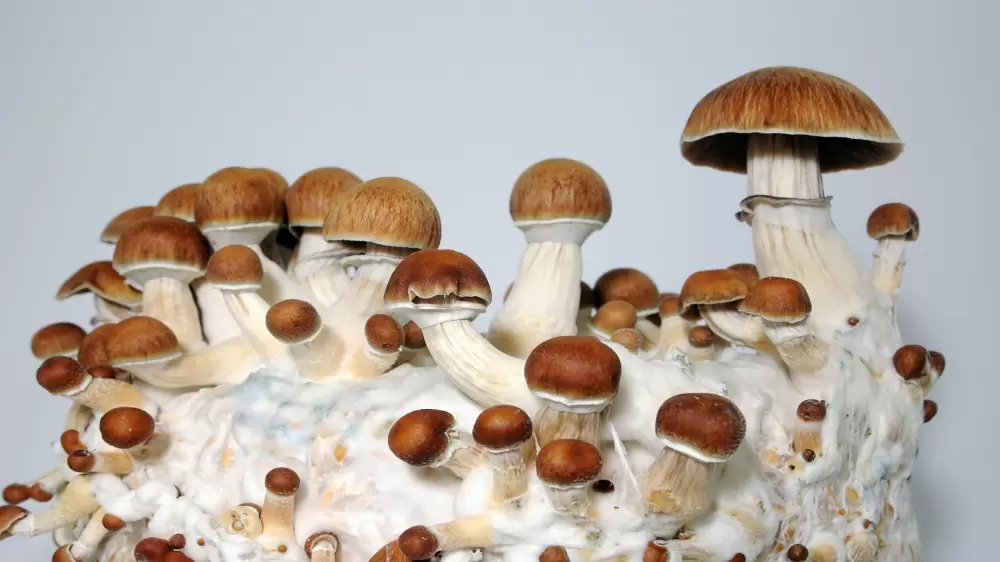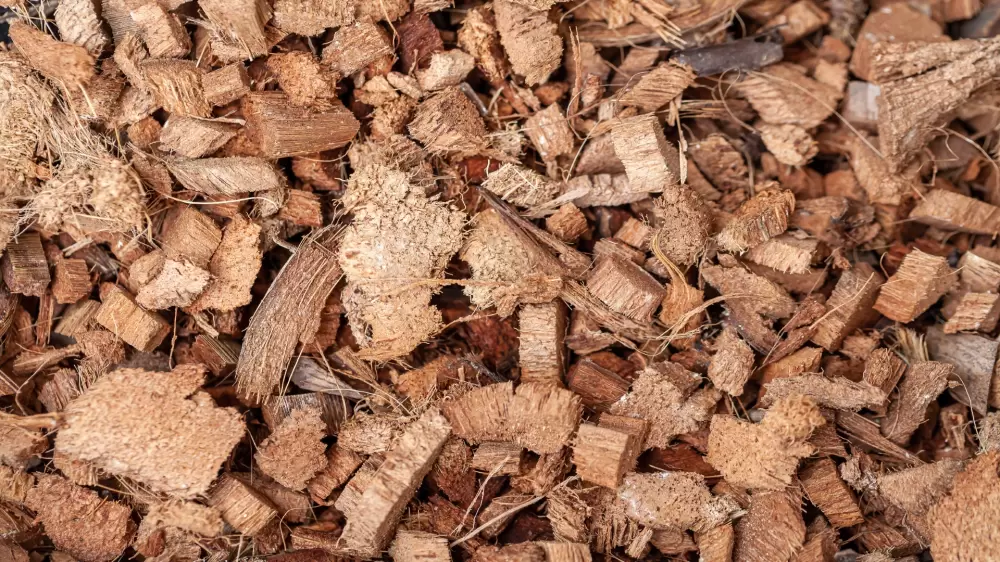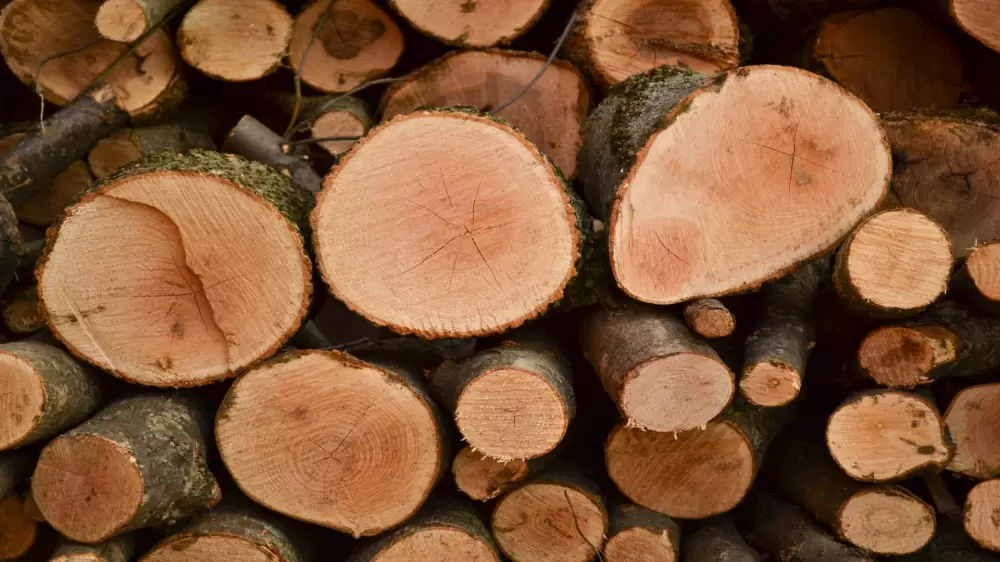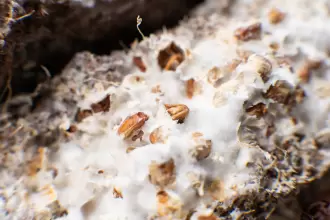WHAT TYPES OF SUBSTRATE ARE THERE FOR GROWING MAGIC MUSHROOMS

Welcome to this blog about making a mushroom growing substrate, which covers all the necessary information about the different substrates for your mushroom growing and how to prepare them. We help you choose a suitable substrate and much more. If you want to grow mushrooms, it is very important that you choose the right substrate. If you are not using a ready-to-use grow kit, you will have to prepare the medium yourself. Growing magic mushrooms is very different from growing (cannabis) plants, where soil from a garden center is often sufficient. Mushrooms are not plants, but belong to the fungal family. As a result, they logically also need specific cultivation conditions, in which the right substrate plays a very important role.
What is a Mushroom Substrate?
Most of you will be familiar with the term photosynthesis. Photosynthesis is the process by which plants convert water and carbon dioxide, under the influence of energy from sunlight, into oxygen and nutrients (carbohydrates, such as glucose). However, mushrooms are not plants, but fungi and do not require light to grow. Magic mushrooms feed on decomposing material from nature. The substrate is used by the mycelium for energy and nutrition. The Mycelium is the part of the fungus that is underground. This is a network of hyphae (also called hyphae) of the conscious mushroom species that you want to grow. A mycelium can arise from a single spore. In the wild, mycelia can form underground or in a nutrient medium such as a rotten tree trunk. The mycelium will normally continue to spread through long threads.
From the mycelium eventually grow above the ground the fruiting bodies, or the magic mushrooms. A healthy mycelium is of great importance when growing magic mushrooms. Have you bought a grow kit? Then you don't have to worry, because it already contains an extremely suitable substrate. After a few simple actions, the mycelium will automatically start to grow in the grow kit. The resulting mushrooms will follow shortly after. However, do you want to grow a considerable number of magic mushrooms or do you not want to use a grow kit for the cultivation of your own magic mushrooms? Then you will have to get started yourself and make your own substrate. This substrate should be inoculated with mushroom spores or mixed with mushroom spawn. The mycelium then grows up from the substrate and after a while mushrooms appear. So the magic mushrooms are actually the above-ground fruiting bodies of the fungus. There are plenty of substrates to choose from for your magic mushrooms. Some well-known examples are: straw, hardwood sawdust and / or a mix of coconut fibers with vermiculite. Even coffee grounds and manure can sometimes be used as a suitable substrate for your mushroom cultivation.
Preparing the Mushroom Substrate
Unlike soil, before growing of plants, always prepare the substrate before use! For example, you have to add moisture (water) and possibly also nutrients. It is even more important that you pasteurize or sterilize the substrate. Most substrates such as straw, wood, manure, etc. contain many organic substances that the mushrooms use for their development. Unfortunately, in addition to these good and important substances, substrates sometimes also contain fungi, bacteria and other undesirable substances. These invaders often grow even faster than your magic mushrooms! This can be a major danger to your entire mushroom cultivation and therefore also to your harvest. Nobody wants this of course! You must therefore ensure that you prevent these infections at all times, so that your healthy mushrooms can develop themselves optimally. So this is the main reason that you pasteurize and / or sterilize the substrate before you can inoculate it with the mushroom spores.
Sterilization
To sterilize your substrate, you have to put it under high heat pressure to a temperature of 120 °C or higher. This will completely destroy all living organisms. Failure to do so will allow harmful organisms to compete with your mushrooms. These harmful organisms could affect your mushroom culture or, in the worst case, even destroy it completely!
Pasteurization
With pasteurization, you heat the substrate for a few hours at a temperature of 65–85 °C. You use a warm bath of water and / or steam for this. This will not kill all harmful microbes, but you will at least give the mushrooms a good head start. Sometimes it can even be good if certain microorganisms remain in the substrate.
The choice between pasteurization or sterilization strongly depends on what type of substrate you use for cultivating your magic mushroom. Low-nutrient substrates, such as straw, can be prepared with pasteurization alone. However, there are also substrates, such as hardwood sawdust, that contain too many nutrients. You must sterilize these substrates because it often happens that they are contaminated with fungi and other harmful microbacteria. 
Suitable Substrates for mushroom cultivation
A good substrate does not only belong the organic nutrients your magic mushrooms need for their development. You also want a type of substrate that you can work with with ease. You will of course also have to consider costs when choosing the type of substrate. It is important to know that there is not an ideal substrate for the cultivation of all mushroom varieties. That's why some mushroom growers are experimenting with different substrate types to find out which type of substrate yields the best results with a particular mushroom.
Rice flour and vermiculite
This is by far the simplest and best known way to create a substrate. Substrate of brown rice flour with added vermiculite, with the function: air circulation and keeping the substrate moist. This is an inexpensive way to realize a substrate. Usually glass jars are used to put the substrate in here and inject them with mushroom spores. Keep in mind that this substrate must also be sterilized (pressure cooker) before you inject it with the mushroom spores. The mixing ratio is two parts vermiculite, one part brown rice flour and one part water. This method has the PF-Tek method, simple to prepare, but a second and third harvest on this substrate is difficult to achieve. Mixing ratio 2: 1: 1, two parts vermiculite, one part brown rice flour and one part water.
Coconut fiber and vermiculite
The mix of coconut fiber and vermiculite is crazy popular among mushroom growers and for good reason! The mix of coconut fiber and vermiculite is an extremely suitable substrate for growing mushrooms. Vermiculite is a mineral that expands enormously under enormous heat and is, as it were, blown up. After a heat treatment, vermiculite is very well able to absorb (and also release) water, so that your substrate remains moist. Coconut fiber is in the pulp layer between the hard core of the coconut and the outer shell. The standard ratio for mixing coconut fiber and the mineral vermiculite is 1: 1. This combination is not particularly nutritious for plants, but the mix of coconut fiber and vermiculite often contains enough nutrients to grow multiple magic mushrooms. Always make sure to pasteurize this type of substrate before adding mushroom spores to it.
Straw
Straw is a great substrate for mushroom growing. Not only is it very effective as a substrate, it is also quite cheap, as it is a waste product from agriculture regarding. Magic mushrooms themselves love straw, but as a grower you have to realize that working with straw involves a lot of extra work. You have to prepare it by not only cutting it, but also cleaning and pasteurizing it. It is therefore advisable to simply buy a bag of prepared and cleaned straw in the grow shop. To then pasteurize the straw, put it in a large container and pour hot water over the straw.
Coffee grounds
Many plant growers among us will know all too well that coffee grounds have multiple useful uses. Coffee grounds are ideal for enriching soil, as it contains a large amount of nitrogen. Coffee grounds are not only regularly used by many growers, but can also serve as a substrate for mushroom cultivation, although it would not be our preference. It is so rich in biological compounds that there is a real chance of contamination of your mushroom cultivation. It is therefore advisable not to make a substrate consisting only of coffee grounds, but to use it as an addition to other substrates to enrich them. For example, you can often successfully add coffee grounds to substrates consisting of coconut or sawdust. Sterilization is the best option for coffee grounds, but you could also opt for pasteurization.
Manure
Almost all mushroom varieties, and especially the Psilocybe Cubensis (Psilocybin mushrooms), have a great preference for manure. This substrate is therefore often used in the commercial cultivation of, in particular, culinary mushrooms. Growing magic mushrooms with fertilizer can be quite complicated. To make your substrate suitable, the manure must first be composted. To compost manure you have to heat a mix of manure and straw to 72 °C. This heating process destroys all bad microbes, while the good ones benefit from this heat. After heating the manure and straw, pasteurize the resulting compost again to remove the remaining contamination. Manure may be used very often commercially, such as in the cultivation of culinary mushrooms, but for the home grower of mushrooms, fertilizer as a substrate is not really practical.
Wood blocks
It's no secret that magic mushrooms like to eat rotten organic material, including dead wood. Everyone has seen mushrooms growing on a dead tree trunk or tree stump in the forest, so it is not that strange to grow your mushrooms on a log, although this is not nearly as easy. Not all magic mushrooms grow on logs and some types only eat certain types of wood. An additional disadvantage is that it sometimes takes a very long time before the first flush te emerges. This can easily take several months and sometimes even a year! However, it is a nice challenge and with this way of growing, you can fully enjoy a beautiful natural phenomenon. Once you've grafted a wood block with spores, you can sometimes get flushes out of it for years to come! The great thing about it is that you don't have to maintain it and there is no need for sterilization.
Living Trees
Fungi often live in natural harmony with other organisms, a natural phenomenon that also is called mycorrhizal association. When you walk in the forest you sometimes see trees on which mushrooms have started to grow naturally, or mushroom growth on living trees. As far as the small-scale cultivation of magic mushrooms is concerned, it is obviously not that practical to have to graft an entire tree with mushroom spores. Although this would be possible. For mushroom cultivation at home, it is of course more advisable to choose a wood block (dead wood) as a substrate.
Soy hulls
Growing your own mushrooms with soy hulls is also a good idea. option. You can also achieve very good growing results if you combine them with hardwood sawdust. Depending on the type of mushroom you want to grow, you sometimes have to try a little to see the right ratio of soy hulls / hardwood sawdust. It is best to start with a generally safe ratio of 1: 1 and then see which ratio gives you the best result.
Sawdust and / or Wood chips
Hardwood sawdust is, in addition to the mixture of coconut and vermiculite, a very popular substrate for mushroom cultivation. It is easily available and also very cheap. However, sawdust alone is not widely used as a substrate. It is often mixed with wood chips which improves the structure and colonization speed of the mushroom spores and the mycelium. It is important to know that not every type of sawdust is suitable for growing Magic Mushrooms. Soft woods, for example, are not at all suitable as a substrate for growing mushrooms. Choose wisely and therefore for the option of hardwood, such as maple or oak. A good alternative to hardwood sawdust are the well-known wood pellets. These are also easily available. To inoculate with mushroom spores, you must first soak the pellets in water and make your own sawdust.
So what is the best substrate for growing Magic Mushrooms?
From experience we can tell you that the mix of coconut fiber and vermiculite for growing mushrooms produces very good results. If you mix coconut fiber and vermiculite in a 1: 1 ratio, you get an ideal substrate with a generous amount of nutrients and the right structure for mushroom cultivation. However, good results can also be achieved with straw and manure, but the mix of coconut fiber and vermiculite is definitely our preference! However, this does not mean that the other substrates mentioned are not good, but they are often difficult to obtain and you also have to prepare them yourself by mixing them with other nutrient media.
you don't have to throw anything away, because you can simply use the remaining substrate as compost. You probably have a place in your garden for a waste mountain. Over time, this waste pile will turn into good compost. At the end of your mushroom cultivation, you will not only have the sought-after mushrooms, but also a nice addition to your soil, where you can then start growing all kinds of things! We wish you the best of luck with your mushroom cultivation!
Author: TheStonedGrower on Instagram

















